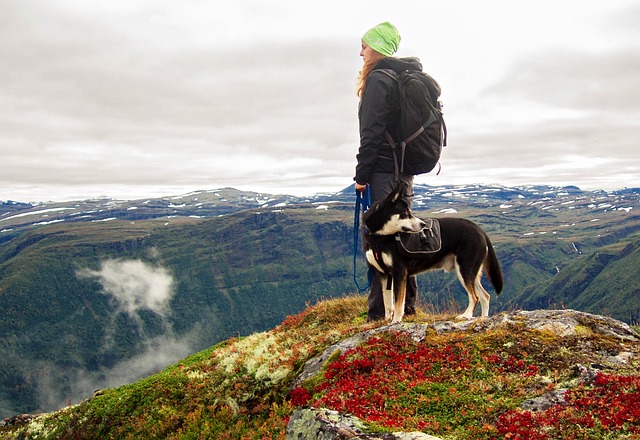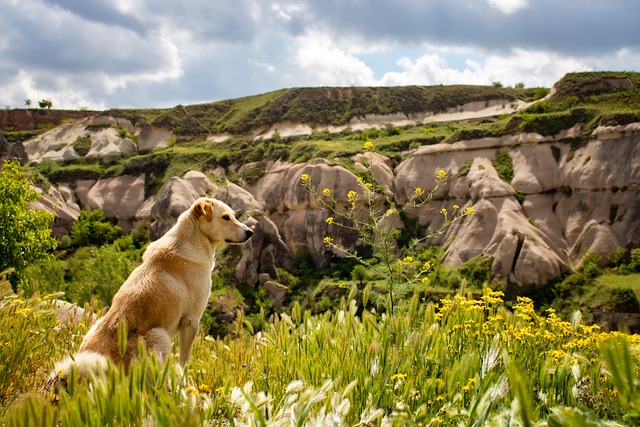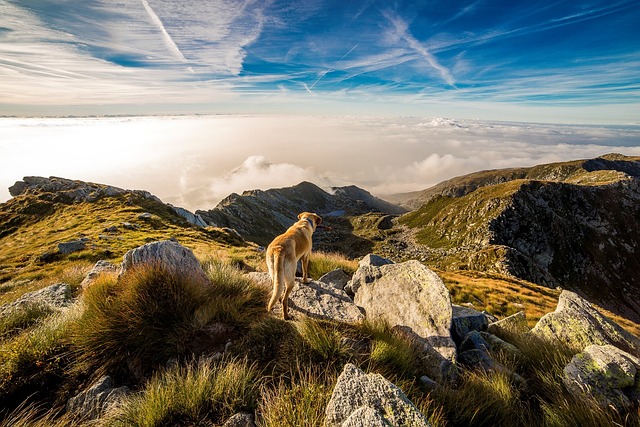
Camping is an excellent way to vacation, but it’s even more fun when you can bring along your furry best friend. Not only do you get a break from the daily grind but your pup gets the chance to experience nature like never before.
It’s important to note though that camping with your dog can be filled with perils if you are unprepared. For a fun-filled, safe adventure with your furry friend, check out these 12 dog camping safety tips. They will help guarantee that both your and your pup’s camping experience is fun and safe.
1. Obedience Training
When taking your dog camping, it is important that he or she is trained to follow basic commands. Surprisingly, this is not something that many people consider when taking their pets along on these types of trips. Dogs need to be trained to have good campground manners — meaning not barking at everything that moves — and if you are taking your dog hiking, good trail manners as well.
If you come across a trail or campground area that allows off-leash dogs, make sure your dog is properly trained before letting him or her free. A free-roaming dog who doesn’t obey simple commands can be dangerous for not only your dog, but also wildlife, other people, and other dogs.

2. Microchips and ID tags
It’s a sad truth, but dogs often get lost. This can be especially scary in unfamiliar places. In the event that this happens, it is important that your dog has an ID tag that isn’t faded and is easy to read. These tags should have your pet’s name, your name, your email address, and your phone number.
You may also want to get your dog outfitted with a microchip. This device will come in handy in the event that your pet ends up in a shelter. The chip allows the shelter to notify you that they have your beloved pup. These devices are implanted under the skin which means that you don’t have to worry about them getting snagged or falling off.
3. First Aid Kits
A first aid kit should be on your list of supplies when going camping with your dog. It is your first line of defense in case something happens to your furry friend at the campsite or on the trail. There are two ways to go about assembling your kit:
- Buy a complete kit online
- Get all the components at pet stores, your local drug store, or at the vet.
You should also consider taking a first aid course.
4. Collars and Leashes
It is important to take your dog’s leash along when camping, even if it’s not required by local park ordinances. Make sure the leash is made of nylon, thick leather, or climbing rope as other types tend to get tangled and may snap.
Remember that a leash will allow you to control your dog, but it can’t control your environment. There are many natural hazards that you may encounter when you are camping including wild animals, cliffs, poisonous plants, sharp rocks, etc. A dog that is off-leash is more likely to get lost or hurt. Thus, it’s important to remember that a dog that’s on a leash is a safe pup.
5. Medications and Vaccines
Before going on your camping trip, it’s important to make sure that your pup’s vaccinations are up to date. This is especially essential for protection against diseases like Distemper and Rabies. Distemper shots prevent Parainfluenza, Hepatitis, and Parvo. Rabies can be deadly.
It is also vital to have tick and flea medications like Advantix or Frontline. Fleas and ticks not only cause your dog discomfort, but they can also infect your dog with a variety of diseases like Lyme disease. If you don’t like long-term repellants, flea and tick sprays are available as well. These should be applied at various points during your hike.

6. Hydration
You probably won’t have access to natural purified water when you are hiking with your dog. Creeks and streams will keep your pet cool, but they may be contaminated with harmful bacteria. Like humans, dogs are vulnerable to water-borne illnesses. Bringing a couple of extra water bottles for your dog with you when you are hiking is always a good idea. Another good item to have is a collapsible nylon bowl to make it easier to hydrate your pup.
7. Booties for Your Dog
Booties are not just for pampered pets, but they can play an important role on your camping trip. Once your pet gets used to wearing them, you’ll see that they offer many advantages. Not only do they provide protection from extreme temperatures and rocky terrain, they also provide great traction, and they prevent burrs and foxtails from working their way into your beloved pet’s paws. This is important because foxtails are tough to break down and can cause infection.
8. Crating
When traveling it’s a good idea to put your dog in a carrier so they are not a distraction to you while driving. Crates also keep your furry friend safe if you happen to get into an accident or are forced to make a sudden stop. After arriving at your campsite, they double as a place to keep your dog when you are unable to watch him or her.
If your pup hasn’t been crate trained, use a 10 to 20-foot long line that is attached to a harness to keep him confined. It’s important to note that this line should NOT be tied around Fido’s neck.
9. Ratios
When taking your dog camping, it’s important to maintain a ratio of one pet to every human. Things can quickly get out of hand when you have to control two dogs all by your lonesome. For instance, if your dog gets hurt or tired on the trail, it’s a hassle to control one while carrying the other. If you have more than one dog, you should have an extra person along on your trip to help control the situation.
10. Wild Animals
You should never let your dog chase wildlife. Not only is this illegal, but it can also be potentially dangerous. For instance, slower-moving animals, like skunks and porcupines, can hurt your pup when cornered. Also, chasing faster animals like coyotes, deer, and rabbits, will soon have your pet out of sight. Keeping your dog on a leash will ensure that your pet won’t get lost, you won’t have to pay fines, and you won’t have to take extra trips to the vet’s office.
11. Vet Information
Before you leave your home, write down the information of at least two vets that are close to your campsite. This will come in handy if something unexpected should happen. In these instances, it will lessen your stress level and save you precious time — it may even save your pet’s life.
12. Breaks
When on the trail with your dog it’s important to make sure that you take breaks.
- Dogs tend to get dehydrated while hiking so you should give them water at least once an hour.
- Breaks give your pet a chance to rest. This is especially important if you see that your pet is excessively panting or walking at a slower pace. In these instances, find a cool, shaded area so that your furry friend can recuperate.
- You should check your dog for injuries, scrapes, and ticks every now and again. Make sure that you bring a brush and check your pup starting from the bottom and working your way up. Be sure to check Fido’s ears and nose as well.
The Bottom Line
Taking Fido with you on your next trip can prove to be an entertaining experience. But, if proper precautions aren’t taken, it can cause a lot of problems. It is important to follow the above safety tips for dogs to ensure that things go as smoothly as possible. Happy Camping!






